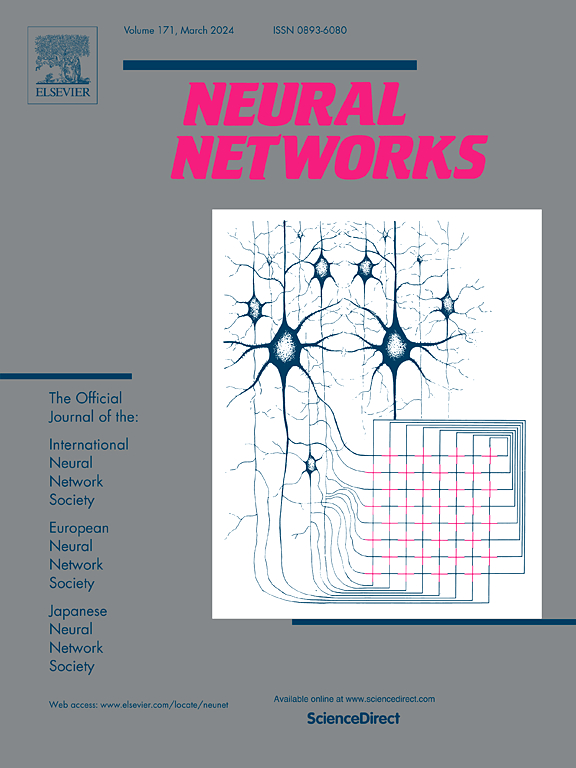Bio-inspired two-stage network for efficient RGB-D salient object detection
IF 6
1区 计算机科学
Q1 COMPUTER SCIENCE, ARTIFICIAL INTELLIGENCE
引用次数: 0
Abstract
Recently, with the development of the Convolutional Neural Network and Vision Transformer, the detection accuracy of the RGB-D salient object detection (SOD) model has been greatly improved. However, most of the existing methods cannot balance computational efficiency and performance well. In this paper, inspired by the P visual pathway and the M visual pathway in the primate biological visual system, we propose a Bio-inspired Two-stage Network for Efficient RGB-D SOD, named BTNet. It simulates the visual information processing of the P visual pathway and the M visual pathway. Specifically, BTNet contains two stages: region locking and object refinement. Among them, the region locking stage simulates the visual information processing process of the M visual pathway to obtain coarse-grained visual representation. The object refinement stage simulates the visual information processing process of the P visual pathway to obtain fine-grained visual representation. Experimental results show that BTNet outperforms other state-of-the-art methods on six mainstream benchmark datasets, achieving significant parameter reduction and processing 384 × 384 resolution images at a speed of 175.4 Frames Per Second (FPS). Compared with the cutting-edge method CPNet, BTNet reduces parameters by 93.6% and is nearly 7.2 times faster. The source codes are available at https://github.com/ROC-Star/BTNet.
求助全文
约1分钟内获得全文
求助全文
来源期刊

Neural Networks
工程技术-计算机:人工智能
CiteScore
13.90
自引率
7.70%
发文量
425
审稿时长
67 days
期刊介绍:
Neural Networks is a platform that aims to foster an international community of scholars and practitioners interested in neural networks, deep learning, and other approaches to artificial intelligence and machine learning. Our journal invites submissions covering various aspects of neural networks research, from computational neuroscience and cognitive modeling to mathematical analyses and engineering applications. By providing a forum for interdisciplinary discussions between biology and technology, we aim to encourage the development of biologically-inspired artificial intelligence.
 求助内容:
求助内容: 应助结果提醒方式:
应助结果提醒方式:


